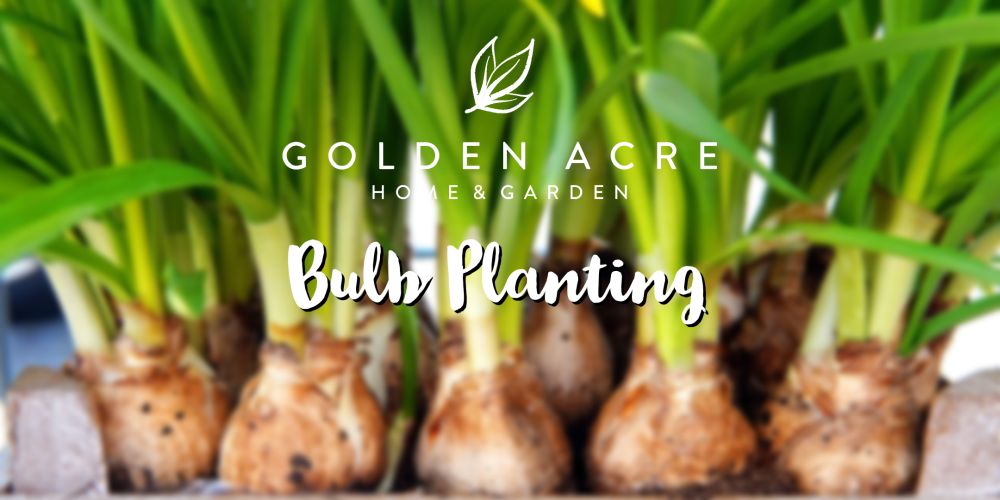Bulbs are now available with more on the way! Shop the best selection in store and some varieties online now. As Colin mentioned in today’s webinar, bulbs give us the ultimate delayed gratification. You put all the work into planting spring bulbs, like tulips and daffodils, right now and need to wait until the snow melts next year to fully enjoy them! What a pay off though. There’s nothing like venturing out into the garden after our winter hibernation and seeing those delicate little shoots emerging from the earth. Spring bulbs provide some of the first colour you see in Calgary’s growing season!
Thank you to everyone who logged in to this weeks autumn inspired webinar! Colin explored what bulbs are, how you plant them, and things to expect when dealing with bulbs. Check out Colin’s detailed PowerPoint here.
Some highlights from today:
What is a Bulb?
- Any plant that stores its complete lifecycle in an underground storage structure.
- Normally perennial – come back year after year.
- They undergo periods of dormancy, growth, and flowering.
- In order to flower in the spring, spring bulbs like tulips and daffodils require a period of cool dormancy. Plant them any time between September and December!
- Make sure to read the bulb package for specific depth and spacing requirements.
- Depth guideline: Usually 2-3 times the height of the bulb.
- Plant as individuals, in a row, or clustered together
- Clustering Bulbs: Be aware of depth when mixing. See photo below.
- Don’t be afraid to mix and match colour!
- Be aware of sun and shade requirements.
- Consider adding a dusting of bone meal in the hole with blub. This slow-release fertilizer will give your bulb some extra nutrients in the spring.
- Consider sprinkling a little blood meal on top of the soil to discourage curious squirrels

- Bulbs starting growing when they come in contact with moisture from the melting snow and ice. They break their dormancy and shoots begin emerging. This might happen a different times every year.

- Bulbs become one of the first things you see in the spring and can air pollinators who may be venturing out looking for pollen. This is also a great way to signal that your garden is pollinator friendly which helps your other plants later in the season.
- Watering: Regular watering is required.
- Fertilizer: All Purpose or Flower fertilizer is good in the spring! Don’t fertilizer in the autumn because you want them to sleep not wake up!
- Deadhead: Remove old blooms, but don’t cut back foliage until the plant fully finishes blooming (leaves turn yellow or brown). You can remove the stem of the flower as well so it looks better aesthetically. Leave the leaves!
- Perennial: Don’t dig out bulbs until you start to notice their bloom come up “tired” looking or non-existent. This is important if you plan on transplanting them to a different section of your garden.
- Planting daffodils with your tulips will help keep squirrels away.
- Watering is key not only after planting (so the soil doesn’t dry them out), but also in the spring when the bulb starting producing shoots.
- If using chicken wire to block squirrels from digging up bulbs over autumn/winter, make sure to quickly remove it in the spring to avoid damaging new shoots.

